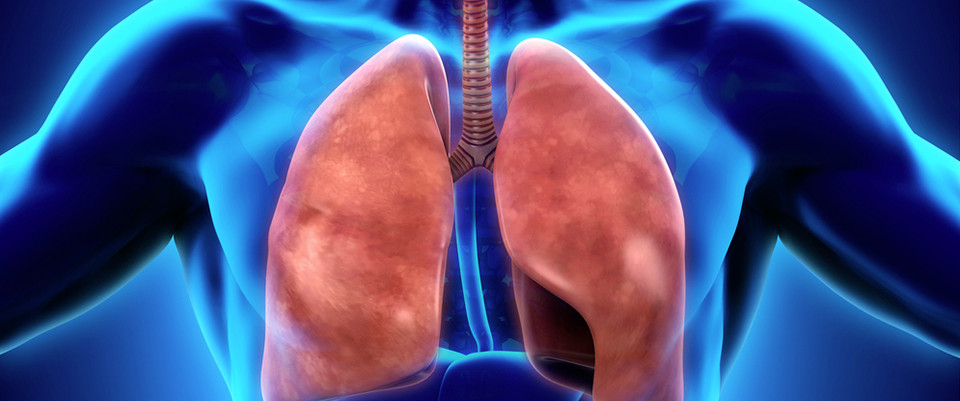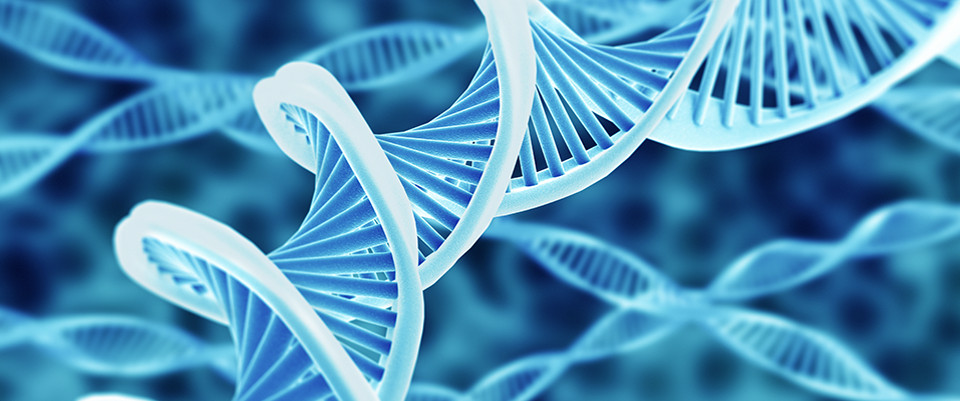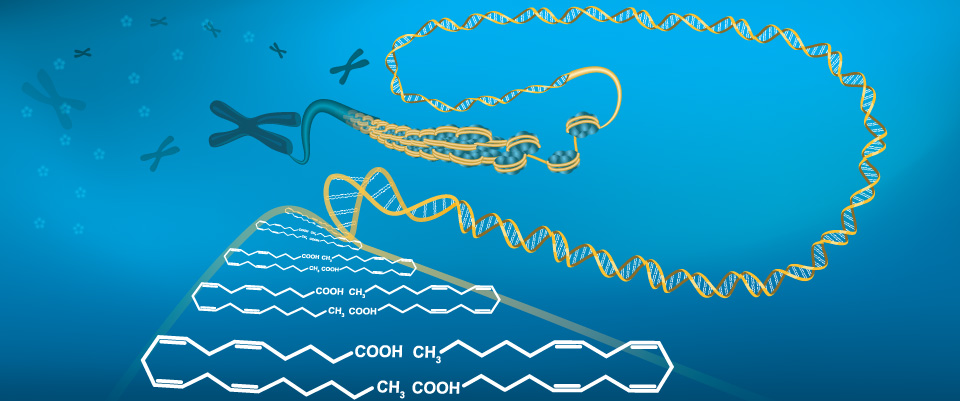PubMed
Biomarkers of dementia in obstructive sleep apnea.
Related Articles
Biomarkers of dementia in obstructive sleep apnea.
Sleep Med Rev. 2018 Aug 13;:
Authors: Baril AA, Carrier J, Lafrenière A, Warby S, Poirier J, Osorio RS, Ayas N, Dubé MP, Petit D, Gosselin N, Canadian Sleep and Circadian Network
Abstract
Epidemiologic and mechanistic evidence is increasingly supporting the notion that obstructive sleep apnea is a risk factor for dementia. Hence, the identification of patients at risk of cognitive decline due to obstructive sleep apnea may significantly improve preventive strategies and treatment decision-making. Cerebrospinal fluid and blood biomarkers obtained through genomic, proteomic and metabolomic approaches are improving the ability to predict incident dementia. Therefore, fluid biomarkers have the potential to predict vulnerability to neurodegeneration in individuals with obstructive sleep apnea, as well as deepen our understanding of pathophysiological processes linking obstructive sleep apnea and dementia. Many fluid biomarkers linked to Alzheimer's disease and vascular dementia show abnormal levels in individuals with obstructive sleep apnea, suggesting that these conditions share common underlying mechanisms, including amyloid and tau protein neuropathology, inflammation, oxidative stress, and metabolic disturbances. Markers of these processes include amyloid-β, tau proteins, inflammatory cytokines, acute-phase proteins, antioxydants and oxidized products, homocysteine and clusterin (apolipoprotein J). Thus, these biomarkers may have the ability to identify adults with obstructive sleep apnea at high risk of dementia and provide an opportunity for therapeutic intervention. Large cohort studies are necessary to establish a specific fluid biomarker panel linking obstructive sleep apnea to dementia risk.
PMID: 30241998 [PubMed - as supplied by publisher]
metabolomics; +24 new citations
24 new pubmed citations were retrieved for your search.
Click on the search hyperlink below to display the complete search results:
metabolomics
These pubmed results were generated on 2018/09/22PubMed comprises more than millions of citations for biomedical literature from MEDLINE, life science journals, and online books.
Citations may include links to full-text content from PubMed Central and publisher web sites.
metabolomics; +17 new citations
17 new pubmed citations were retrieved for your search.
Click on the search hyperlink below to display the complete search results:
metabolomics
These pubmed results were generated on 2018/09/21PubMed comprises more than millions of citations for biomedical literature from MEDLINE, life science journals, and online books.
Citations may include links to full-text content from PubMed Central and publisher web sites.
Particulate metal exposures induce plasma metabolome changes in a commuter panel study.
Particulate metal exposures induce plasma metabolome changes in a commuter panel study.
PLoS One. 2018;13(9):e0203468
Authors: Ladva CN, Golan R, Liang D, Greenwald R, Walker DI, Uppal K, Raysoni AU, Tran V, Yu T, Flanders WD, Miller GW, Jones DP, Sarnat JA
Abstract
INTRODUCTION: Advances in liquid chromatography-mass spectrometry (LC-MS) have enabled high-resolution metabolomics (HRM) to emerge as a sensitive tool for measuring environmental exposures and corresponding biological response. Using measurements collected as part of a large, panel-based study of car commuters, the current analysis examines in-vehicle air pollution concentrations, targeted inflammatory biomarker levels, and metabolomic profiles to trace potential metabolic perturbations associated with on-road traffic exposures.
METHODS: A 60-person panel of adults participated in a crossover study, where each participant conducted a highway commute and randomized to either a side-street commute or clinic exposure session. In addition to in-vehicle exposure characterizations, participants contributed pre- and post-exposure dried blood spots for 2-hr changes in targeted proinflammatory and vascular injury biomarkers and 10-hr changes in the plasma metabolome. Samples were analyzed on a Thermo QExactive MS system in positive and negative electrospray ionization (ESI) mode. Data were processed and analyzed in R using apLCMS, xMSanalyzer, and limma. Features associated with environmental exposures or biological endpoints were identified with a linear mixed effects model and annotated through human metabolic pathway analysis in mummichog.
RESULTS: HRM detected 10-hr perturbations in 110 features associated with in-vehicle, particulate metal exposures (Al, Pb, and Fe) which reflect changes in arachidonic acid, leukotriene, and tryptophan metabolism. Two-hour changes in proinflammatory biomarkers hs-CRP, IL-6, IL-8, and IL-1β were also associated with 10-hr changes in the plasma metabolome, suggesting diverse amino acid, leukotriene, and antioxidant metabolism effects. A putatively identified metabolite, 20-OH-LTB4, decreased after in-vehicle exposure to particulate metals, suggesting a subclinical immune response.
CONCLUSIONS: Acute exposures to traffic-related air pollutants are associated with broad inflammatory response, including several traditional markers of inflammation.
PMID: 30231074 [PubMed - in process]
Structural and Functional Analysis of the Gut Microbiome for Toxicologists.
Structural and Functional Analysis of the Gut Microbiome for Toxicologists.
Curr Protoc Toxicol. 2018 Sep 19;:e54
Authors: Nichols RG, Cai J, Murray IA, Koo I, Smith PB, Perdew GH, Patterson AD
Abstract
Characterizing the reciprocal interactions between toxicants, the gut microbiota, and the host, holds great promise for improving our mechanistic understanding of toxic endpoints. Advances in culture-independent sequencing analysis (e.g., 16S rRNA gene amplicon sequencing) combined with quantitative metabolite profiling (i.e., metabolomics) have provided new ways of studying the gut microbiome and have begun to illuminate how toxicants influence the structure and function of the gut microbiome. Developing a standardized protocol is important for establishing robust, reproducible, and importantly, comparative data. This protocol can be used as a foundation for examining the gut microbiome via sequencing-based analysis and metabolomics. Two main units follow: (1) analysis of the gut microbiome via sequencing-based approaches; and (2) functional analysis of the gut microbiome via metabolomics. © 2018 by John Wiley & Sons, Inc.
PMID: 30230220 [PubMed - as supplied by publisher]
Fine-tuning of SIRT1 expression is essential to protect the liver from cholestatic liver disease.
Fine-tuning of SIRT1 expression is essential to protect the liver from cholestatic liver disease.
Hepatology. 2018 Sep 19;:
Authors: Blokker BA, Maijo M, Echeandia M, Galduroz M, Patterson AM, Ten A, Philo M, Schungel R, Gutierrez-de Juan V, Halilbasic E, Fuchs C, Le Gall G, Milkiewicz M, Milkiewicz P, Banales JM, Rushbrook SM, Mato JM, Trauner M, Müller M, Martínez-Chantar ML, Varela-Rey M, Beraza N
Abstract
Cholestasis comprises aetiologically heterogeneous conditions characterized by accumulation of bile acids in the liver that actively contribute to liver damage. Sirtuin 1 (SIRT1) regulates liver regeneration and bile acid metabolism via modulating the farnesoid X receptor (FXR); we here investigate its role in cholestatic liver disease. We determined SIRT1 expression in livers from patients with cholestatic disease, in two experimental models of cholestasis, as well as in human and murine liver cells in response to bile acid loading. SIRT1 overexpressing (SIRToe ) and hepatocyte-specific SIRT1-KO mice (SIRThep-/- ) were subjected to BDL and were fed with 0.1%DDC diet to determine the biological relevance of SIRT1 during cholestasis. The effect of NorUDCA was tested in BDL/SIRToe mice. We found that SIRT1 was highly expressed in livers from cholestatic patients, mice after BDL and Mdr2-/- animals. The detrimental effects of SIRT1 during cholestasis were validated in vivo and in vitro. SIRToe mice showed exacerbated parenchymal injury whereas SIRThep-/- mice evidenced a moderate improvement after BDL and 0.1%DDC feeding. Likewise, hepatocytes isolated from SIRToe mice showed increased apoptosis in response to bile acids, while a significant reduction was observed in SIRThep-/- hepatocytes. Importantly, the decrease, but not complete inhibition of SIRT1 exerted by NorUDCA treatment correlated with pronounced improvement in liver parenchyma in BDL/SIRToe mice. Interestingly, both SIRT1 overexpression and hepatocyte-specific SIRT1 depletion correlated with inhibition of the farnesoid X receptor (FXR), whereas modulation of SIRT1 by NorUDCA associated with restored FXR-signalling.
CONCLUSION: SIRT1 expression is increased during human and murine cholestasis. Fine-tuning expression of SIRT1 is essential to protect the liver from cholestatic-liver damage. This article is protected by copyright. All rights reserved.
PMID: 30229970 [PubMed - as supplied by publisher]
1H NMR metabolomics identifies underlying inflammatory pathology in osteoarthritis and rheumatoid arthritis synovial joints.
1H NMR metabolomics identifies underlying inflammatory pathology in osteoarthritis and rheumatoid arthritis synovial joints.
J Proteome Res. 2018 Sep 19;:
Authors: Anderson JR, Chokesuwattanaskul S, Phelan MM, Welting TJ, Lian LY, Peffers MJ, Wright HL
Abstract
Despite osteoarthritis (OA) and rheumatoid arthritis (RA) being typically age-related, their underlying aetiologies are markedly different. We used 1H Nuclear Magnetic Resonance (NMR) spectroscopy to identify differences in metabolite profiles in low volumes of OA and RA synovial fluid (SF). SF was aspirated from knee joints of 10 OA and 14 RA patients. 100µL SF was analysed using a 700 MHz Avance IIIHD Bruker NMR spectrometer with a TCI cryoprobe. Spectra were analysed by Chenomx, Bruker TopSpin and AMIX software. Statistical analysis was undertaken using Metaboanalyst®. 50 metabolites were annotated, including amino acids, saccharides, nucleotides and soluble lipids. Discriminant analysis identified group separation between OA and RA cohorts, with 32 metabolites significantly different between OA and RA SF (False Discovery Rate (FDR)<0.05). Metabolites of glycolysis and the tricarboxylic acid cycle were lower in RA compared to OA; these results concur with higher levels of inflammation, synovial proliferation and hypoxia found in RA compared to OA. Elevated taurine in OA may indicate increased subchondral bone sclerosis. We demonstrate that quantifiable differences in metabolite abundance can be measured in low volumes of SF by 1H NMR spectroscopy, which may be clinically useful to aid diagnosis and improve understanding of disease pathogenesis.
PMID: 30229649 [PubMed - as supplied by publisher]
A serum metabolomics signature of hypothermia fatalities involving arginase activity, tryptophan content, and phosphatidylcholine saturation.
Related Articles
A serum metabolomics signature of hypothermia fatalities involving arginase activity, tryptophan content, and phosphatidylcholine saturation.
Int J Legal Med. 2018 Sep 18;:
Authors: Rousseau G, Chao de la Barca JM, Rougé-Maillart C, Teresiński G, Jousset N, Dieu X, Chabrun F, Prunier-Mirabeau D, Simard G, Reynier P, Palmiere C
Abstract
INTRODUCTION: Hypothermia is a potentially lethal condition whose postmortem diagnosis is often complex to perform due to the absence of pathognomonic lesions and biomarkers. Our first study of human serum and urinary metabolome in hypothermia fatalities sought novel biomarkers with better diagnostic performances than those already existing.
MATERIAL AND METHOD: Thirty-two cases of hypothermia deaths and 16 cases excluding known antemortem exposure to cold or postmortem elements suggesting hypothermia were selected. A targeted metabolomic study allowing the detection and quantitation of 188 metabolites was performed on collected serum and urine using direct flow injection (FIA) and liquid chromatography (LC) separation, both coupled to tandem mass spectrometry (MS/MS). Amino acid quantification was also carried on using an in-house LC-MS/MS method in order to replicate the results obtained with the metabolomic study.
RESULTS: A discriminant metabolic signature allowing a clear separation between hypothermia and control groups was obtained in the serum. This signature was characterized by increased arginase activity and fatty acid unsaturation along with decreased levels of tryptophan in hypothermia fatalities compared to controls. By contrast, no discriminant metabolic signature separating hypothermia from control fatalities was found in urines.
DISCUSSION: The serum metabolic signature of hypothermia fatalities herein observed pointed toward metabolic adaptations that likely aimed at heat production enhancement, endothelial function, and cell membrane fluidity preservation. Novel biomarkers potentially useful in a hypothermia diagnosis were also identified.
PMID: 30229331 [PubMed - as supplied by publisher]
TumGrowth: An open-access web tool for the statistical analysis of tumor growth curves.
Related Articles
TumGrowth: An open-access web tool for the statistical analysis of tumor growth curves.
Oncoimmunology. 2018;7(9):e1462431
Authors: Enot DP, Vacchelli E, Jacquelot N, Zitvogel L, Kroemer G
Abstract
The analysis of tumor growth curves is standard practice in experimental oncology including tumor immunology. In experimental oncology, cancer cells are inoculated into rodents (mostly mice) and their growth is monitored by measuring tumor diameter, surface or volume over time as a function of distinct treatments. Then, different groups of tumors/treatments are compared among each other for their evolution and possible responses to treatment. The R package TumGrowth has been created as a software tool allowing to carry out a series of statistical comparisons across or between groups of tumor growth curves obtained in a standard laboratory, for experimenters with limited knowledge in statistics. TumGrowth is freely available online at https://kroemerlab.shinyapps.io/TumGrowth/ and can be downloaded into any computer. It offers an exhaustive panoply of tools to visualize and analyze complex data sets including longitudinal, cross-sectional and time-to-endpoint measurements.
PMID: 30228932 [PubMed]
Development of a novel UHPLC-MS/MS-based platform to quantify amines, amino acids and methylarginines for applications in human disease phenotyping.
Related Articles
Development of a novel UHPLC-MS/MS-based platform to quantify amines, amino acids and methylarginines for applications in human disease phenotyping.
Sci Rep. 2018 Sep 18;8(1):13987
Authors: Ahmetaj-Shala B, Olanipekun M, Tesfai A, MacCallum N, Kirkby NS, Quinlan GJ, Shih CC, Kawai R, Mumby S, Paul-Clark M, Want EJ, Mitchell JA
Abstract
Amine quantification is an important strategy in patient stratification and personalised medicine. This is because amines, including amino acids and methylarginines impact on many homeostatic processes. One important pathway regulated by amine levels is nitric oxide synthase (NOS). NOS is regulated by levels of (i) the substrate, arginine, (ii) amino acids which cycle with arginine and (iii) methylarginine inhibitors of NOS. However, biomarker research in this area is hindered by the lack of a unified analytical platform. Thus, the development of a common metabolomics platform, where a wide range of amino acids and methylarginines can be measured constitutes an important unmet need. Here we report a novel high-throughput ultra-high performance liquid chromatography-tandem mass spectrometry (UHPLC-MS/MS) platform where ≈40 amine analytes, including arginine and methylarginines can be detected and quantified on a molar basis, in a single sample of human plasma. To validate the platform and to generate biomarkers, human plasma from a well-defined cohort of patients before and after coronary artery bypass surgery, who developed systemic inflammatory response syndrome (SIRS), were analysed. Bypass surgery with SIRS significantly altered 26 amine analytes, including arginine and ADMA. Consequently, pathway analysis revealed significant changes in a range of pathways including those associated with NOS.
PMID: 30228360 [PubMed - in process]
Pan-cancer transcriptional signatures predictive of oncogenic mutations reveal that Fbw7 regulates cancer cell oxidative metabolism.
Related Articles
Pan-cancer transcriptional signatures predictive of oncogenic mutations reveal that Fbw7 regulates cancer cell oxidative metabolism.
Proc Natl Acad Sci U S A. 2018 05 22;115(21):5462-5467
Authors: Davis RJ, Gönen M, Margineantu DH, Handeli S, Swanger J, Hoellerbauer P, Paddison PJ, Gu H, Raftery D, Grim JE, Hockenbery DM, Margolin AA, Clurman BE
Abstract
The Fbw7 (F-box/WD repeat-containing protein 7) ubiquitin ligase targets multiple oncoproteins for degradation and is commonly mutated in cancers. Like other pleiotropic tumor suppressors, Fbw7's complex biology has impeded our understanding of how Fbw7 mutations promote tumorigenesis and hindered the development of targeted therapies. To address these needs, we employed a transfer learning approach to derive gene-expression signatures from The Cancer Gene Atlas datasets that predict Fbw7 mutational status across tumor types and identified the pathways enriched within these signatures. Genes involved in mitochondrial function were highly enriched in pan-cancer signatures that predict Fbw7 mutations. Studies in isogenic colorectal cancer cell lines that differed in Fbw7 mutational status confirmed that Fbw7 mutations increase mitochondrial gene expression. Surprisingly, Fbw7 mutations shifted cellular metabolism toward oxidative phosphorylation and caused context-specific metabolic vulnerabilities. Our approach revealed unexpected metabolic reprogramming and possible therapeutic targets in Fbw7-mutant cancers and provides a framework to study other complex, oncogenic mutations.
PMID: 29735700 [PubMed - indexed for MEDLINE]
Urinary Metabolomic Profiling in Chronic Hepatitis B Viral Infection Using Gas Chromatography/Mass Spectrometry
Related Articles
Urinary Metabolomic Profiling in Chronic Hepatitis B Viral Infection Using Gas Chromatography/Mass Spectrometry
Asian Pac J Cancer Prev. 2018 Mar 27;19(3):741-748
Authors: Dittharot K, Jittorntam P, Wilairat P, Sobhonslidsuk A
Abstract
Background: Chronic hepatitis B (CHB) can lead to cirrhosis and hepatocellular carcinoma. The metabolomic
profiling has been shown to be associated with pathogenic mechanisms in many medical conditions including
CHB. The purpose of this study was to investigate the urine metabolomic profiles in CHB patients by gas
chromatography/mass spectrometry (GC/MS). Methods: Urine samples were collected from CHB patients (n = 20)
and normal control subjects (n = 20). Metabolite profiles were assessed using GC/MS in conjunction with multivariate
statistical analysis, in order to identify biomarker metabolites. Pathway analysis was performed by MetaboAnalyst
3.0 and KEGG database.Results: Twelve out of 377 metabolites were shown to be significantly different between the
CHB and normal control groups (p < 0.05). These include palmitic acid, stearic acid, oleic acid, benzoic acid, butanoic
acid, cholesterol, glycine, 3-heptanone, 4-heptanone, hexanal, 1-tetradecanol and naphthalene. Multivariate statistical
analysis constructed using these expressed metabolites showed CHB patients can be discriminated from healthy controls
with high sensitivity (95%) and specificity (85%). All the metabolic perturbations in this disease are associated with
pathways of fatty acid, amino acid, bile acid and gut microbial metabolism. Conclusion: CHB patients have a specific
urinary metabolomic profile. The abnormalities of fatty acid, amino acid, bile acid, and gut microbial metabolism lead
to the development of disease progression. GC/MS-based assay is a promising tool for the metabolomic study in CHB.
PMID: 29582629 [PubMed - indexed for MEDLINE]
Glutathione S-transferase genes and the risk of type 2 diabetes mellitus: Role of sexual dimorphism, gene-gene and gene-smoking interactions in disease susceptibility.
Related Articles
Glutathione S-transferase genes and the risk of type 2 diabetes mellitus: Role of sexual dimorphism, gene-gene and gene-smoking interactions in disease susceptibility.
J Diabetes. 2018 May;10(5):398-407
Authors: Azarova I, Bushueva O, Konoplya A, Polonikov A
Abstract
BACKGROUND: Compromised defense against reactive oxygen species (ROS) is considered important in the pathogenesis of type 2 diabetes mellitus (T2DM); therefore, genes encoding antioxidant defense enzymes may contribute to disease susceptibility. This study investigated whether polymorphisms in genes encoding glutathione S-transferase M1 (GSTM1), T1 (GSTT1), and P1 (GSTP1) jointly contribute to the risk of T2DM.
METHODS: In all, 1120 unrelated Russian subjects (600 T2DM patients, 520 age- and sex-matched healthy subjects), were recruited to the study. Genotyping was performed by multiplex polymerase chain reaction (PCR; del/del polymorphisms of GSTM1 and GSTT1) and TaqMan-based PCR (polymorphisms I105V and A114V of GSTP1). Plasma ROS and glutathione levels in study subjects were analyzed by fluorometric and colorimetric assays, respectively.
RESULTS: Genotype del/del GSTT1 was significantly associated with the risk of T2DM (odds ratio [OR] 1.60, 95% confidence interval [CI] 1.17-2.21, P = 0.003). Gender-stratified analysis showed that the deletion genotypes of GSTM1 (OR 1.99, 95% CI 1.30-3.05; P = 0.0002, Q = 0.016) and GSTT1 (OR 2.23, 95% CI 1.22-4.09; P = 0.008, Q = 0.0216), as well as genotype 114A/V of GSTP1 (OR 2.85, 95% CI 1.44-5.62; P = 0.005, Q = 0.02) were associated with an increased risk of T2DM exclusively in males. Three genotype combinations (i.e. GSTM1+ × GSTT1+, GSTM1+ × GSTP1 114A/A and GSTT1+ × GSTP1 114A/A) showed significant associations with a decreased risk of T2DM in males.
CONCLUSIONS: This study demonstrates, for the first time, that genes encoding glutathione S-transferases jointly contribute to the risk of T2DM, and that their effects on disease susceptibility are gender specific.
PMID: 29111615 [PubMed - indexed for MEDLINE]
metabolomics; +17 new citations
17 new pubmed citations were retrieved for your search.
Click on the search hyperlink below to display the complete search results:
metabolomics
These pubmed results were generated on 2018/09/19PubMed comprises more than millions of citations for biomedical literature from MEDLINE, life science journals, and online books.
Citations may include links to full-text content from PubMed Central and publisher web sites.
metabolomics; +17 new citations
17 new pubmed citations were retrieved for your search.
Click on the search hyperlink below to display the complete search results:
metabolomics
These pubmed results were generated on 2018/09/19PubMed comprises more than millions of citations for biomedical literature from MEDLINE, life science journals, and online books.
Citations may include links to full-text content from PubMed Central and publisher web sites.
metabolomics; +18 new citations
18 new pubmed citations were retrieved for your search.
Click on the search hyperlink below to display the complete search results:
metabolomics
These pubmed results were generated on 2018/09/18PubMed comprises more than millions of citations for biomedical literature from MEDLINE, life science journals, and online books.
Citations may include links to full-text content from PubMed Central and publisher web sites.
metabolomics; +18 new citations
18 new pubmed citations were retrieved for your search.
Click on the search hyperlink below to display the complete search results:
metabolomics
These pubmed results were generated on 2018/09/18PubMed comprises more than millions of citations for biomedical literature from MEDLINE, life science journals, and online books.
Citations may include links to full-text content from PubMed Central and publisher web sites.
From 1H NMR-based non-targeted to LC-MS-based targeted metabolomics strategy for in-depth chemome comparisons among four Cistanche species.
From 1H NMR-based non-targeted to LC-MS-based targeted metabolomics strategy for in-depth chemome comparisons among four Cistanche species.
J Pharm Biomed Anal. 2018 Sep 06;162:16-27
Authors: Liu W, Song Q, Cao Y, Xie N, Li Z, Jiang Y, Zheng J, Tu P, Song Y, Li J
Abstract
The great orthogonality between 1H NMR spectroscopy and LC-MS implies that their deployments in series could offer an opportunity to gain the qualified molecular markers via comparative metabolomics, and an attempt was made here to propose an integrated strategy namely "from 1H NMR-based non-targeted to LC-MS-based targeted metabolomics". In-depth chemome comparisons of Cistanche plants, such as C. deserticola, C. salsa, C. tubulosa, and C. sinensis, that possess dramatic economic and ecological benefits for the arid regions in the northwest China attributing to their dramatic medicinal and edible values, were employed to verify the applicability. 1H NMR-based non-targeted matabolomics acted as the survey experiment to find those signals offering decisive contributions towards the species discrimination, and the signals were translated to a set of putative identities, eighteen ones in total, through matching with authentic compounds and referring to some accessible databases. Afterwards, an advanced LC-MS platform assembling reversed phase liquid chromatography, hydrophilic interaction liquid chromatography, and tailored multiple reaction monitoring, was introduced to simultaneously quantify those eighteen potential markers in a single analytical run, because those candidates exhibited great polarity span as well as wide content range. Significant species differences occurred amongst their chemome patterns. Echinacoside, acteoside, betaine, mannitol, 6-deoxycatalpol, sucrose, and 8-epi-loganic acid were disclosed as the markers enabling the discrimination of those four species. The findings offered an alternative tool to differentiate Cistanche plants. More importantly, the strategy namely "from 1H NMR-based non-targeted to LC-MS-based targeted metabolomics" facilitates the pursuit of molecular markers among analogue plants, and thereby provides a promising choice for in-depth chemome comparison.
PMID: 30219595 [PubMed - as supplied by publisher]
Metabolomics analysis of oral mucosa reveals profile perturbation in reticular oral lichen planus.
Related Articles
Metabolomics analysis of oral mucosa reveals profile perturbation in reticular oral lichen planus.
Clin Chim Acta. 2018 Sep 12;:
Authors: Yang XY, Li XZ, Zhang SN
Abstract
BACKGROUND: Oral lichen planus (OLP) is a chronic inflammatory mucosal disorder and potentially oral premalignant lesion affecting the stratified squamous epithelia. In OLP, reticular type is the most common clinical form of the disease. However, little is known about it. Metabolomics analysis may help to investigate the disease pathogenesis and to improve clinical treatment.
METHODS: Liquid chromatography (LC)-mass spectrometry (MS) system, XCMS software, SIMCA software, and OSI / SMMS software were integrated to identify differentially expressed metabolites for the pathways and pathology analysis.
RESULTS: Totally, 21 modulated metabolites were identified, whose dysregulations affected 30 metabolic pathways. Through an impact-value screen (impact-value>0.1), 8 pathways were selected as the significantly dysregulated pathways. Pathological network showed that these metabolites participated in 5 pathological processes, that is, inflammatory lesion, DNA damage and repair disorder, apoptosis process, oxidative stress injury, and abnormal energy expenditure.
CONCLUSION: The study revealed the metabolic perturbation of oral mucosa in reticular OLP, which may provide an important reference for the understanding of the pathogenesis of the disease and the discovery of therapeutic targets.
PMID: 30218656 [PubMed - as supplied by publisher]
Intracellular Metabolic Changes of Rhodococcus sp. LH During the Biodegradation of Diesel Oil.
Related Articles
Intracellular Metabolic Changes of Rhodococcus sp. LH During the Biodegradation of Diesel Oil.
Mar Biotechnol (NY). 2018 Sep 14;:
Authors: Chen Z, Zheng Z, Wang FL, Niu YP, Miao JL, Li H
Abstract
In recent years, some marine microbes have been used to degrade diesel oil. However, the exact mechanisms underlying the biodegradation are still poorly understood. In this study, a hypothermophilous marine strain, which can degrade diesel oil in cold seawater was isolated from Antarctic floe-ice and identified and named as Rhodococcus sp. LH. To clarify the biodegradation mechanisms, a gas chromatography-mass spectrometry (GC-MS)-based metabolomics strategy was performed to determine the diesel biodegradation process-associated intracellular biochemical changes in Rhodococcus sp. LH cells. With the aid of partial least squares-discriminant analysis (PLS-DA), 17 differential metabolites with variable importance in the projection (VIP) value greater than 1 were identified. Results indicated that the biodegradation of diesel oil by Rhodococcus sp. LH was affected by many different factors. Rhodococcus sp. LH could degrade diesel oil through terminal or sub-terminal oxidation reactions, and might also possess the ability to degrade aromatic hydrocarbons. In addition, some surfactants, especially fatty acids, which were secreted by Rhodococcus into medium could also assist the strain in dispersing and absorbing diesel oil. Lack of nitrogen in the seawater would lead to nitrogen starvation, thereby restraining the amino acid circulation in Rhodococcus sp. LH. Moreover, nitrogen starvation could also promote the conversation of relative excess carbon source to storage materials, such as 1-monolinoleoylglycerol. These results would provide a comprehensive understanding about the complex mechanisms of diesel oil biodegradation by Rhodococcus sp. LH at the systematic level.
PMID: 30218327 [PubMed - as supplied by publisher]











